First two Su-35E fighters were delivered to Iran in pieces
By Boyko Nikolov On
Nov 30, 2024
German sources have reported that the Islamic Republic of Iran Air Force [IRIAF] has received its first two
Sukhoi Su-35SE fighter jets. According to
Flugrevue, the jets were handed over during a private ceremony at the Komsomolsk-on-Amur Aircraft Plant [KnAAPO] on November 18, 2024. This marks a significant development in Iran’s ongoing efforts to modernize its air force.
Photo credit: Wikipedia
The German report states that the multirole fighters were disassembled and transported to Mehrabad Airport in Tehran aboard a Russian Antonov An-124-100 military cargo plane.
Once in Tehran, the aircraft components were offloaded for further transfer to the 3rd Tactical Air Base near the city of
Hamadan, where the jets will be reassembled. This process will be the first step in preparing the aircraft for operational deployment.
Flugrevue also notes that while the initial IRIAF plan was to use the Su-35SE to replace its aging fleet of Grumman F-14A Tomcats stationed in Isfahan, the order for the Su-35SE has reportedly been expanded from 25 to 50 aircraft.
This adjustment suggests a broader role for the Su-35SE in Iran’s air force, potentially supporting the phase-out of its aging McDonnell Douglas F-4E Phantom II fighters. Currently, these Phantoms serve with the 31st Tactical Fighter Squadron at the Hamadan base, highlighting the pressing need for new-generation aircraft.
Iran’s underground air base,
known as Eagle-44, represents a significant advancement in its efforts to safeguard its air power against potential adversaries. Officially unveiled in February 2023, this facility is one of several subterranean complexes designed to house and protect advanced military aircraft, including fighters and drones, from airstrikes.
Situated in an undisclosed location, the base is strategically positioned to enhance Iran’s operational flexibility and resilience, particularly in a region where air superiority plays a critical role in military strategy.
Eagle-44 is equipped with extensive infrastructure to support a variety of aircraft operations. The base reportedly features fortified hangars, maintenance facilities, and storage areas, all concealed within mountain ranges to minimize vulnerability to satellite surveillance and missile attacks.
Footage released by Iranian state media has showcased its ability to accommodate large aircraft, as well as the presence of missile systems, suggesting it is designed to serve as both a staging ground and a defensive stronghold.
Its construction aligns with Iran’s doctrine of survivability, aiming to maintain its air force’s functionality even in the face of sustained attacks.
While the full capabilities of Eagle-44 remain classified, its development highlights Iran’s growing focus on asymmetric strategies to counter technologically superior adversaries.
The base is likely intended to house some of Iran’s most advanced aircraft, such as the recently acquired Su-35E fighters, along with indigenous drones and missile systems.
This facility, along with others reportedly under construction, signals Tehran’s commitment to ensuring the longevity and operational readiness of its air force under any circumstances.
To integrate these advanced fighters into its arsenal, Iran faces several procedural and logistical steps. Upon arrival at the Hamadan facility, the jets will undergo careful assembly by specialized teams.
This will involve connecting critical systems, calibrating avionics, and testing mechanical and electronic components to ensure operational readiness.
Following assembly, the Su-35SEs will undergo extensive ground testing to validate systems like engines, flight controls, and weapons integration. Only after these checks will test flights begin, allowing IRIAF pilots to familiarize themselves with the aircraft’s capabilities.
This process will likely include collaboration with Russian experts to ensure proper training for Iranian personnel, as the Su-35SE represents a significant technological leap over Iran’s current fleet.
In addition to pilot training, ground crews will need to be educated on the maintenance requirements of the Su-35SE. With its advanced radar systems and avionics, the Su-35SE demands high levels of technical proficiency.
Iran will also need to establish a reliable supply chain for spare parts, as any disruption in availability could severely impact the aircraft’s operational readiness.
The acquisition of these aircraft signals Iran’s intention to modernize its air force while addressing its reliance on aging platforms.
However, challenges in assembly, training, and maintenance mean that months of preparation lie ahead before these advanced jets become a functional part of the IRIAF fleet. As Flugrevue highlights, this delivery is just the beginning of a complex process to bring Iran’s air power closer to contemporary standards.
The path to Iran’s acquisition of Sukhoi Su-35E fighter jets has been marked by complex geopolitical negotiations, technical hurdles, and evolving strategic priorities.
Discussions between Iran and Russia regarding the sale of advanced combat aircraft date back to the early 2000s but gained momentum after the lifting of a United Nations arms embargo on Iran in October 2020.
The removal of this restriction under Resolution 2231 opened the door for Tehran to modernize its aging air force, a long-standing objective hindered by decades of sanctions and isolation.
Despite the embargo’s expiration, Iran’s pursuit of the Su-35E faced significant obstacles. Western powers, particularly the United States, expressed strong opposition to arms sales that would bolster Iran’s military capabilities.
Moreover, Russia, while willing to engage in arms deals, was initially hesitant due to concerns about international backlash and the broader geopolitical implications. However, growing ties between Moscow and Tehran, bolstered by shared interests in Syria and opposition to Western influence, eventually set the stage for a potential agreement.
A breakthrough reportedly occurred in 2022 when Iran provided Russia with drones and other equipment for use in its conflict in Ukraine. This deepened bilateral cooperation, with military-to-military ties becoming a focal point.
By 2023, reports began to surface that Iran had finalized an order for 25 Su-35SE jets. However, the delivery timeline was unclear, partly due to production constraints at Sukhoi and partly due to the logistical complexities of transferring advanced military technology to a heavily sanctioned country.
The deal’s execution faced further delays as Iran sought to secure the infrastructure and technical expertise necessary to operate and maintain the aircraft. Russian assistance was critical in this regard, as Iran lacked prior experience with the Su-35 platform.
By 2024, additional reports suggested that the order had been expanded to 50 units, reflecting Iran’s broader ambitions to overhaul its air force and integrate the Su-35E into its strategic doctrine.
The Sukhoi Su-35 represents a pinnacle of Russian combat aircraft design and engineering, embodying decades of experience in developing multirole fighter jets.
The Su-35 is a heavily upgraded derivative of the Su-27 Flanker, featuring advanced avionics, super-maneuverability, and the ability to carry a wide range of weapons.
Designed as a
“4++ generation” fighter, it bridges the gap between fourth-generation jets like the Su-30 and fifth-generation platforms such as
the Su-57.
The Su-35SE, the export variant of the aircraft, comes equipped with advanced systems that make it a formidable addition to any air force. Key among these is the N035 Irbis-E radar, capable of detecting and tracking up to 30 aerial targets simultaneously at ranges exceeding 400 kilometers.
The aircraft also features thrust-vectoring engines, granting it unparalleled maneuverability in dogfights and the ability to perform complex aerial maneuvers like the Pugachev’s Cobra and the Kulbit.
In terms of armament, the Su-35 can carry up to 8 tons of weapons on 12 hardpoints. This includes air-to-air missiles like the R-77 and R-73, air-to-ground munitions such as the Kh-29 and Kh-31, and precision-guided bombs.
The aircraft is also equipped with the Khibiny electronic countermeasure system, which enhances its survivability by jamming enemy radars and missiles.
The Su-35 is available in various configurations tailored to the needs of different operators. While the Su-35S is the primary variant used by the Russian Aerospace Forces, export models like the Su-35SE can be customized with different avionics and systems based on the customer’s requirements.
This flexibility has made the Su-35 a popular choice among nations seeking advanced fighter capabilities without investing in fifth-generation technologies.
The operational role of the Su-35 includes air superiority, ground attack, and reconnaissance missions. Its combination of speed, range, and weaponry allows it to dominate contested airspace and deliver precise strikes against ground targets.
However, its full potential depends on the proficiency of its operators and the quality of its logistical support—a challenge Iran must address as it integrates the Su-35SE into its air force.
For Tehran, acquiring this platform is not just about upgrading its fleet but also about projecting power in a region where air superiority remains a critical component of military strategy.
***
Follow us everywhere and at any time. BulgarianMilitary.com has responsive design and you can open the page from any computer, mobile devices or web browsers. For more up-to-date news, follow our Google News, YouTube, Reddit, LinkedIn, Twitter and Facebook pages. Our standards: Manifesto & ethical principles.







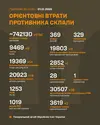

 Kurahoven suunta
Kurahoven suunta ️ Tällä hetkellä vihollisen hallinnassa on kaksi korttelia kerrostaloja Voiton ja Lermontovin katujen välissä. He eivät kuitenkaan ole vielä vahvistaneet asemiaan, ja pelkäävät yllätyksiä meiltä, minkä vuoksi eivät kiirehdi miehittämään rakennuksia.
️ Tällä hetkellä vihollisen hallinnassa on kaksi korttelia kerrostaloja Voiton ja Lermontovin katujen välissä. He eivät kuitenkaan ole vielä vahvistaneet asemiaan, ja pelkäävät yllätyksiä meiltä, minkä vuoksi eivät kiirehdi miehittämään rakennuksia. Itärintama
Itärintama



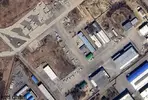
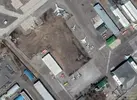
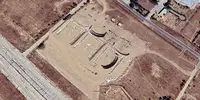
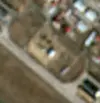

 budjetin tukemiseen vuoden 2024 loppuun mennessä ja € 1,5 miljardin kuukausimaksun tammikuusta 2025 alkaen.
budjetin tukemiseen vuoden 2024 loppuun mennessä ja € 1,5 miljardin kuukausimaksun tammikuusta 2025 alkaen.